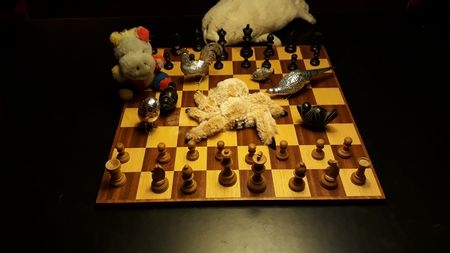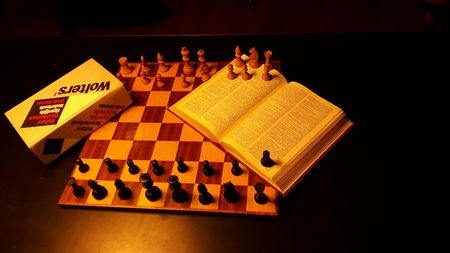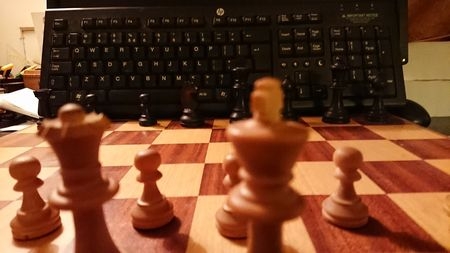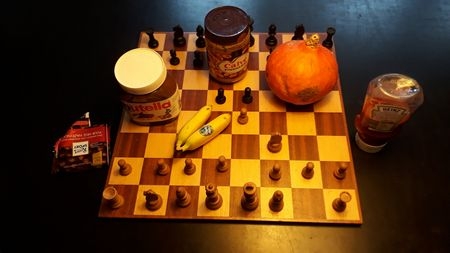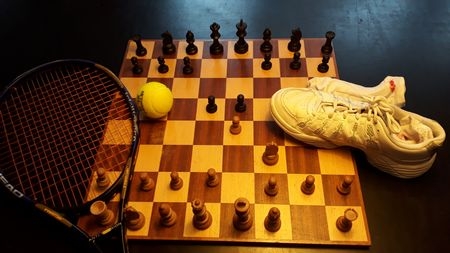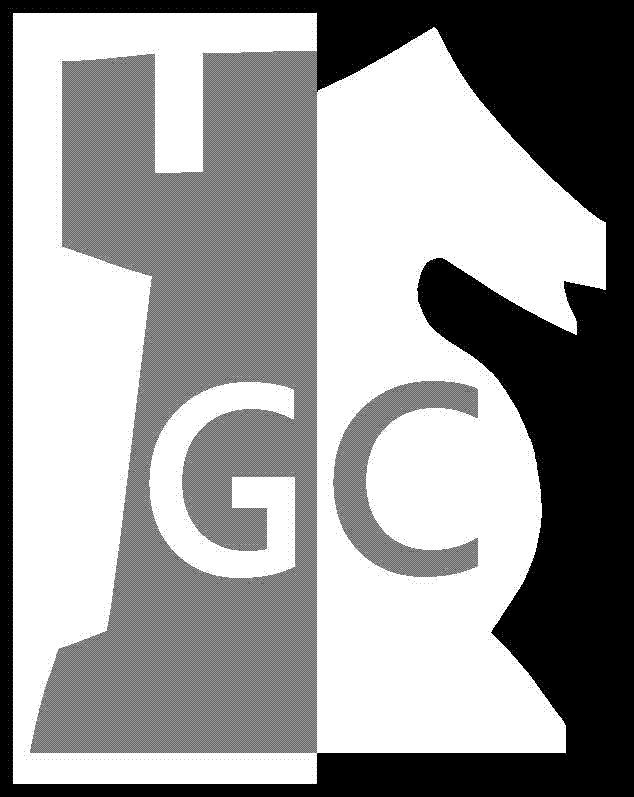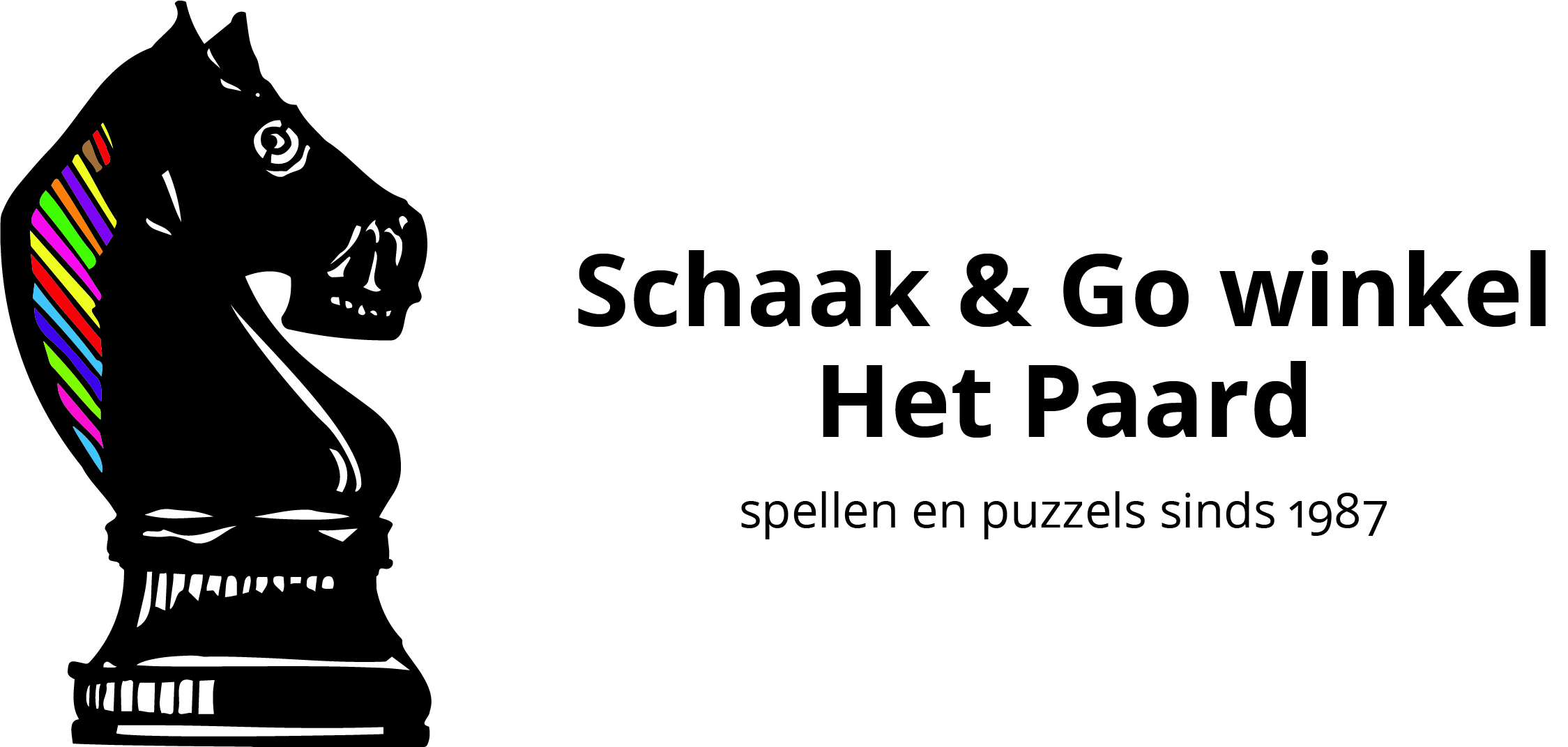The first question your colleague chess player asks is never if you would like something to drink or how your mother is. It is always: ‘What is your new rating?’ The chess player who has lost nine rating points on the new Elo rating list, considers selling his house and leaving the country forever. Gained fourteen points? The player orders a case of champagne, drinks it, and dares to show his face at the chess club again.
Rating terror flourishes in the chess world. A few weeks ago a team member of mine lost a long, difficult game. The first thing his opponent asked was: ‘What is your rating?’ My team member answered, and the first reaction on the other side of the board was a typical one: ‘Oh, then I only won four rating points.’
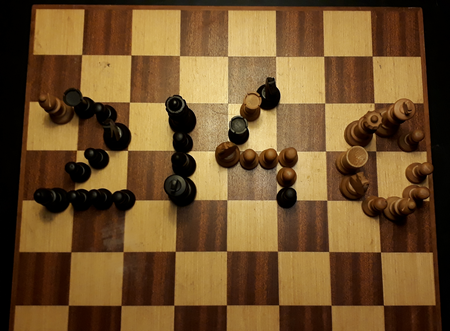
Older players suddenly quit chess, because they are afraid they’re not taken seriously in the chess world anymore when their rating drops below 2600. Players accept a draw, only to win 0,4 rating points. You’re not in the Olympiad team, just because your fellow countryman has two points more on the last FIDE ranking. And in Bulgaria cases are known of fake tournaments, organised only for certain players to gain a few rating points. It might only be a matter of time before the first chess player commits suicide after a significant rating loss.
Do tennis players ask other players: ‘Tell me, how many ATP-points do you have?’ Or do football players ask: ‘What is your place on the new FIFA-ranking?’ No, only chess players do this, apparently. In the rational chess world, where predominantly unstable characters yearn for some kind of objectivity as a substitute for actually being in control of their lives. Rating appears to be the ultimate determiner of identity. The image of oneself – and the image as seen by others – is highly defined by one’s rating. Every chess player who claims that rating is no issue at all, is a liar.
The Elo rating system was created in the late sixties by the Hungarian chess player en physics professor Arpad Elo. He developed a formula in which standard deviation, normal distribution, K-factor, and Z-scores combined determine a players’ rating. This formula is nearly as difficult to grasp as the formula for string theory. To make it even more complicated: each national federation also has its own system. To calculate your own rating after a few games is not easy. That’s probably a good thing, because otherwise chess players would do nothing else all day.
2800 is of course the holy grail for chess players. For us, insignificant mortals, a rating as unreachable as giving oral pleasure to one self. Till now only thirteen players have successfully reached this Olympus. Shakhriyar Mamedyarov was the last one to join this illustrious club. The list, starting with the highest rating ever reached, furthermore consist of Carlsen, Kasparov, Caruana, Aronian, Topalov, So, Anand, Vachier Lagrave, Nakamura, Kramnik, Grischuk, and Giri. Teimour Radjabov from Azerbaijan decided to return half a meter from the top. In 2012 he reached a rating of 2799,6. He probably still regrets this and wishes he would have entered in the first open tournament around the corner and beat a patzer.
Giants like Karpov (2790,9) and Fischer (2789,7) are not on the list. According to Kasparov (2856,7) this is unfair, particularly in Fishers case. He had to compete against opponents with an average rating of 2600 and thus he had to work much harder to gain rating points.
Similar criticism of the system is voiced quite often. Top players only play against each other and have thus created their own chess oligarchy. Lately, a different tendency can be recognised: private sponsors choose to organise open tournaments because they are often more spectacular. Because of the substantial prize funds in these sponsored tournaments top players participate, allowing chess fans to see players like Carlsen, Caruana, Nakamura en Kramnik to sometimes struggle against lower-rated players (e.g. during the last edition of the Isle of Man tournament) .
The so-called ‘rating inflation’ is arguably a reflection of reality: the level of top players in chess is increasing, mainly because of the use of computers during training and preparation from a young age. However, as is often the case when a system works properly, people are flirting with the idea of a new system. A universal rating system that combines blitz, rapid and classical chess has been proposed, for instance. I would say: let’s count our blessings. Let’s be happy we are not under the influence of vague sports politicians keeping secret agendas.
Let’s embrace the Elo rating system. Chess players can easily set goals for themselves and one can immediately see results. It’s difficult to blame anyone but yourself when you have lost nine rating points once again, how painful that may be. The system is fair, life is hard and sometimes unfair, and your chess rating is a perfect reflection of that fact.
Benno de Jongh
Benno de Jongh writes daily columns during the Chess Festival, published around 3 pm on playing days. De Jongh is a journalist and a chess player, who has never reached the rating of 2000, and probably never will. Despite that fact he is one of the worlds leading experts on the Elephant Gambit and working on a book on the subject, (working title: The Elephant Gambit, A Rare Black Beast with a Proboscis on the Board, publication expected in 2032). De Jongh’s opinions on several chess- and non-chess-related items do not in any way reflect the policy of the organisation of the festival.


